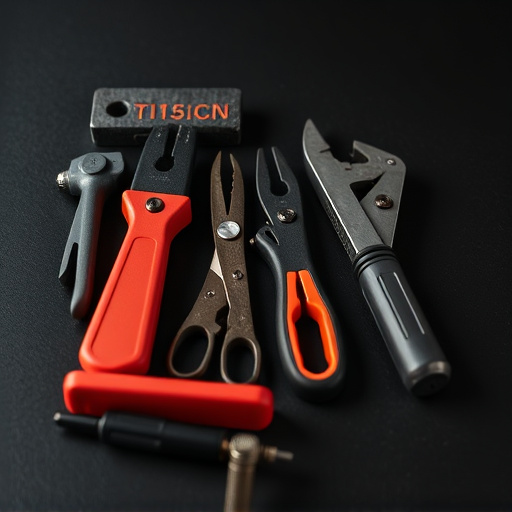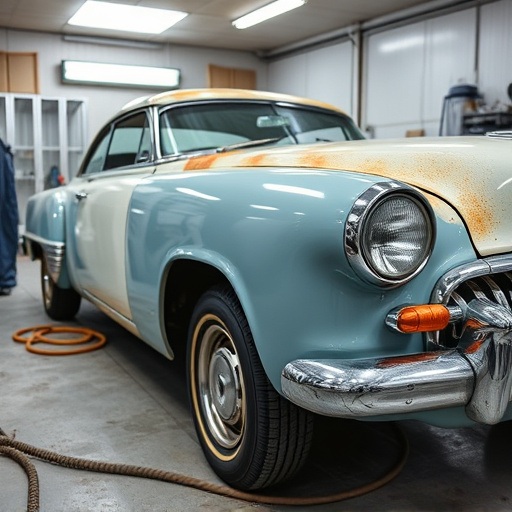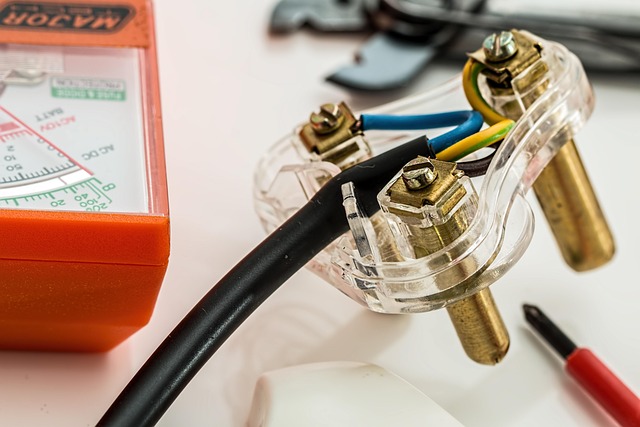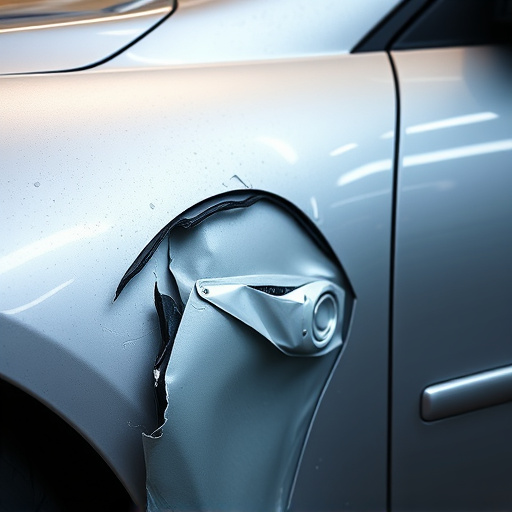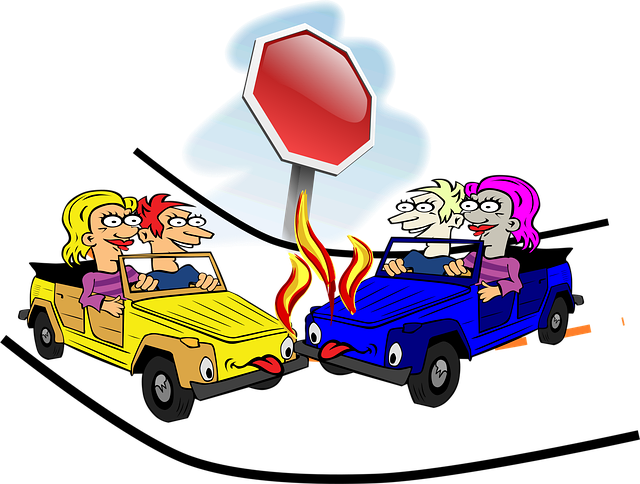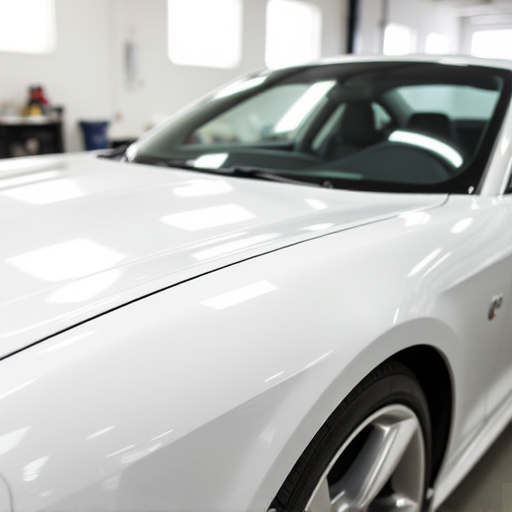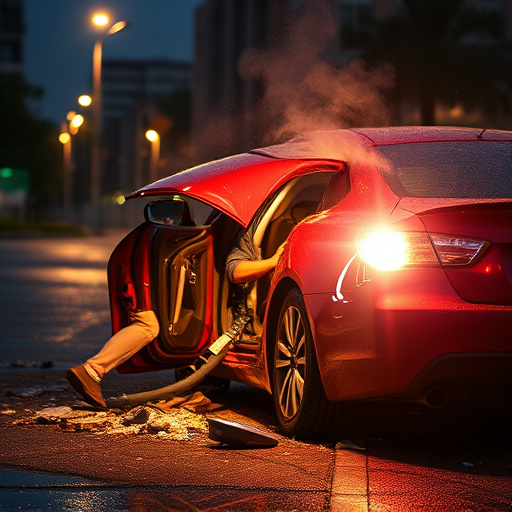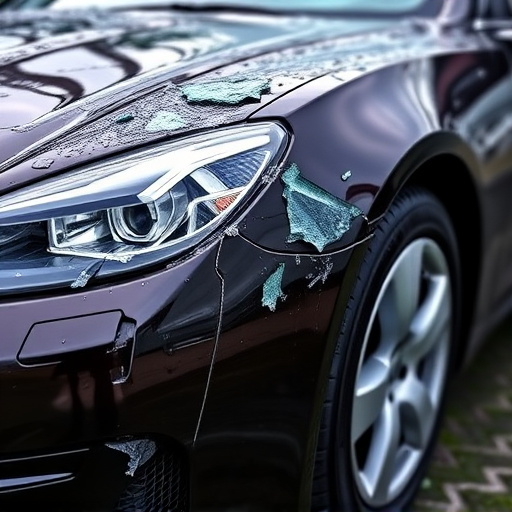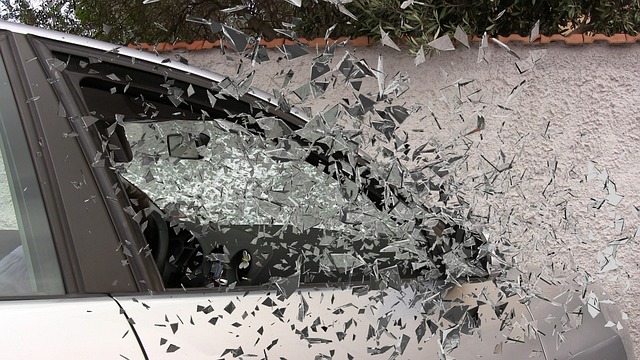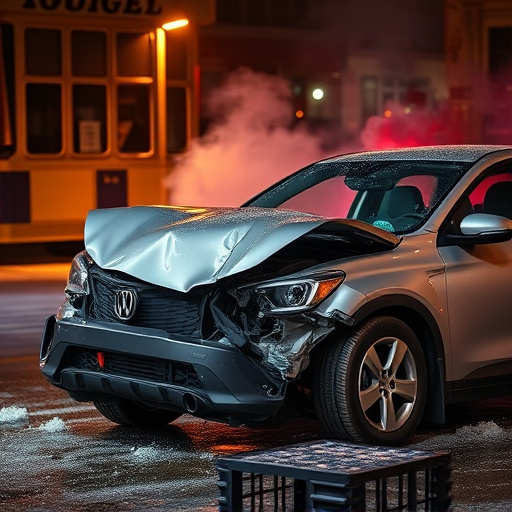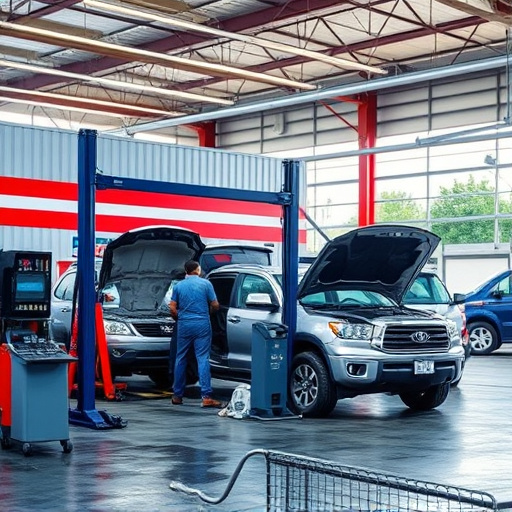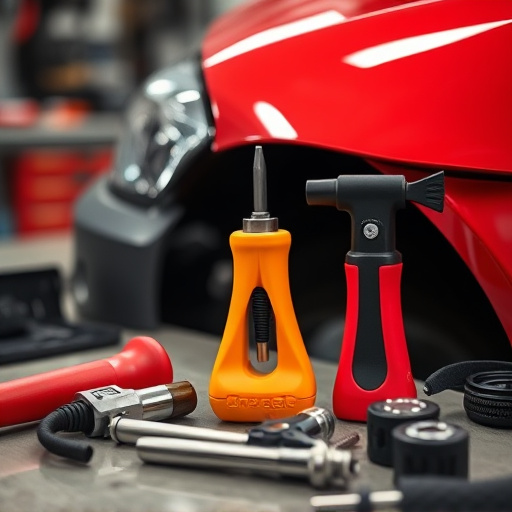Before repairing a wagon's body, a detailed pre-repair assessment is crucial to identify damage extent and type. Technicians use specialized tools for gap measurement, corrosion checking, and panel alignment, addressing potential hidden issues. This process paves the way for effective repairs, combining traditional skills with modern techniques. From simple spot repairs to complex panel replacements, advanced materials like composite alternatives and laser welding ensure structural integrity and aesthetic appeal. Computer-aided design (CAD) software and precise tools elevate wagon body repair standards, achieving results comparable to factory-original conditions.
In the realm of automotive restoration, wagon body repair stands out as a delicate art. Effective techniques demand a meticulous approach, from pre-repair assessment to advanced materials. This article delves into the key elements of successful wagon body repair, guiding enthusiasts and professionals through essential steps. From understanding panel dynamics to exploring advanced methods, you’ll discover the secrets to achieving exceptional results, ensuring these classic vehicles roll on with pride.
- Understanding Wagon Body Repair: Essential Pre-Repair Assessment
- Core Techniques for Restoring Wagon Body Panels
- Advanced Methods and Materials for Exceptional Results
Understanding Wagon Body Repair: Essential Pre-Repair Assessment
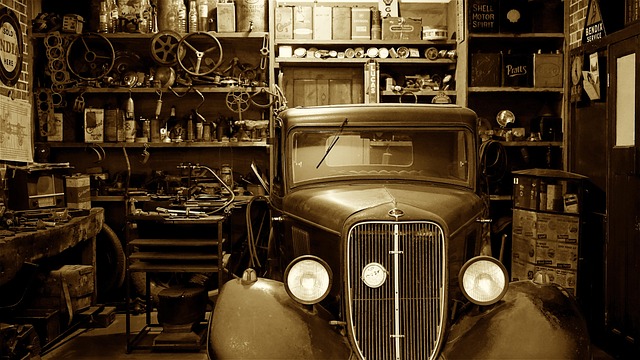
Before diving into any wagon body repair, a thorough pre-repair assessment is crucial. This initial step involves meticulously examining the damaged area to identify the extent and nature of the repairs needed. It’s not just about fixing dents or dings; it encompasses a comprehensive look at the vehicle’s structure, panel alignment, and overall integrity. During this phase, experienced technicians will also consider potential hidden damage that might require attention, such as compromised structural components or distorted panels caused by a collision or previous repairs.
This assessment is more than just visual inspection; it often involves using specialized tools to measure gaps between panels, check for corrosion, and ensure proper alignment. This meticulous process sets the foundation for successful wagon body repair, guaranteeing that the final results will be both structurally sound and aesthetically pleasing. It’s akin to having a roadmap that guides the entire collision repair process in a bustling car shop, ensuring every repair, from bumper repair to car scratch repair, aligns perfectly with the vehicle’s overall health and longevity.
Core Techniques for Restoring Wagon Body Panels
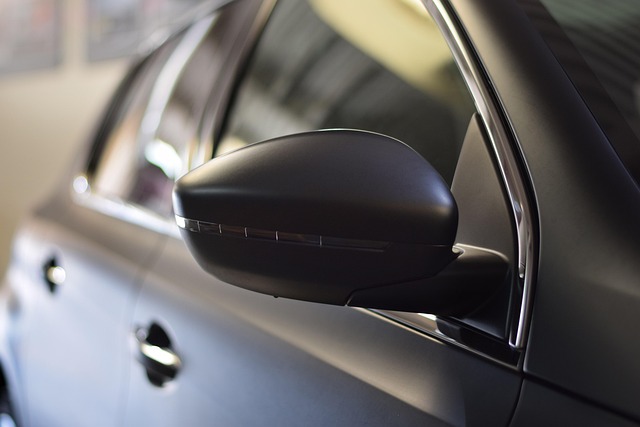
Restoring wagon body panels requires a meticulous approach, combining both traditional and modern techniques for optimal results. The core strategies involve a careful blend of skill and specialized tools to ensure the repair is both structural and aesthetic. Skilled technicians begin by assessing the damage, identifying cracks, dents, or holes that need attention. This initial evaluation guides the choice of repair methods, which can range from simple spot repairs using specialized putty and primer to more complex panel replacement, especially for extensive damage.
For smaller imperfections, such as minor dings or scratches, a common technique involves sanding and then applying a high-quality car paint service to match the wagon’s original finish seamlessly. This process demands precision and an eye for detail to ensure color accuracy and a smooth, seamless blend with the surrounding body panels. Auto body repair experts also employ advanced tools like heat guns and vacuum bagging systems for more significant structural repairs, ensuring panels are precisely aligned and sealed for long-lasting durability.
Advanced Methods and Materials for Exceptional Results

In the realm of wagon body repair, advanced methods and materials play a pivotal role in achieving exceptional results. Modern techniques such as precision laser welding and state-of-the-art computer-aided design (CAD) software enable technicians to restore even the most intricate panel shapes to their original factory specifications. These innovations ensure minimal distortion and superior structural integrity, making the repaired wagon virtually indistinguishable from its pristine condition.
Beyond traditional car dent repair and conventional vehicle bodywork techniques, modern approaches like composite material restoration and advanced paint repair technologies elevate the standards ofwagon body repair. Composites, known for their lightweight yet robust nature, are increasingly used to replace damaged panels with precision-engineered alternatives. Meanwhile, sophisticated paint repair methods employ specialized tools and chemicals to fill, smooth, and match the surrounding paint seamlessly, preserving the vehicle’s overall aesthetic appeal.
Effective wagon body repair combines meticulous assessment, a mastery of various techniques, and the application of advanced materials. By understanding the unique challenges presented by wagon body panels and utilizing these key elements, restorers can achieve exceptional results that preserve the vehicle’s authenticity and enhance its aesthetic appeal. This comprehensive approach to wagon body repair ensures vehicles return to their original glory, ready to navigate the road with confidence.
